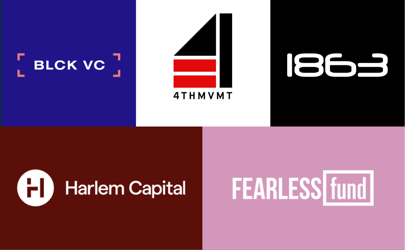There are two metrics every startup founder who runs an eCommerce business likely needs to be aware of if they want to generate revenue: customer acquisition cost (CAC), and customer lifetime value (CLV).
By religiously tracking these metrics, you may be able to better control advertising spending and create marketing campaigns where you get the maximum bang for your buck.
Confused about what your customer acquisition cost and customer lifetime value are? Want to learn how to calculate both? Let’s dive in!
What’s customer acquisition?
ECommerce customer acquisition is the process of acquiring new customers for your eCommerce store and involves measuring customer acquisition cost (CAC). When you're creating your go-to-market strategy, you may want to ensure that the CAC isn't too high.
Use marketing channels with the lowest CAC to make the most profit.
What is customer acquisition cost?
Customer Acquisition Cost (CAC) refers to the total amount of resources a business spends in order to gain a new customer. This includes all marketing and sales expenses involved in attracting and converting a potential customer.
In essence, if you were to sum up the costs of advertising, promotions, salaries for marketing and sales personnel, and any other related expenses, and then divide this total by the number of customers acquired in that period, you would arrive at the Customer Acquisition Cost.
For instance, if a company spends $400 to bring in each new customer, this means their CAC is $400. However, it's crucial for startups to carefully manage their CAC, as overspending can seriously harm the financial health of the business
Why should you calculate customer acquisition cost?
Customer acquisition costs are significant to investors and companies. Investors use this metric to figure out how scalable an Internet company is. They’ll be able to determine the profitability of an enterprise by looking at the difference between how much money can be made from customers and the cost of making it.
Companies need to know this number so they can reduce it and help increase the company’s profit margin.
How do you calculate customer acquisition cost?
Here’s the formula:
CAC = Total Marketing Cost (TMC) / Total New Purchases (TNP)
For example, let’s take an eCommerce enterprise that sells vegan groceries. The company spends $10,000 on advertising every single month. In September, 2,000 orders were placed. This means the customer acquisition cost is $5. The average customer spends $50 per order, and there’s a markup of 100% on items offered in the online store. The company makes $20 in profit on every sale.
However, other factors affect this number. For instance, if a customer makes recurring purchases throughout their lifetime. This is where customer lifetime value comes in and provides more context so you can better understand the customer acquisition cost.
A $5 customer acquisition cost would be a bargain if customers loved the products so much that the average person bought $20 worth of groceries for the rest of their life.
Average customer acquisition based on industries
The following data is from DemandJump:
- Travel: $7
- Retail: $10
- Consumer Goods: $22
- Manufacturing: $83
- Transportation: $98
- Marketing Agency: $141
- Financial: $175
- Technology (Hardware): $182
- Real Estate: $213
- Banking/Insurance: $303
- Telecom: $315
- Technology (Software): $395
Average customer acquisition cost for ecommerce
The average eCommerce customer acquisition cost is difficult to ascertain because, for many companies, it's a closely guarded trade secret. It depends on the industry, turnover, margin, and the possibility of repeat sales. Amazon is said to spend approximately $160 per new customer acquired, while eBay pays around $180, and Facebook spends roughly $60.
A small business using pay-per-click advertising might only need to spend around $20 per customer if they choose their keywords well.
What goes into customer acquisition cost?
When figuring out customer acquisition cost, ensure you account for the following expenses:
- Sales team
- Advertising
- Marketing team
- Creative talent
- Technology
- Publishing
- Production
- Inventory upkeep
Ecommerce factors that affect customer acquisition cost
There are other things you must factor in when figuring out customer acquisition cost.
Referral fees
Referral fees are commissions that you must pay online marketplaces for each sale. Amazon referral fees range from 6% to 20%, while most sellers pay 15%.
Marketing and advertising fees
Amazon, Walmart, and eBay selling platforms all use pay-per-click advertising. This is where you advertise products on your website and only pay if someone clicks through or makes a purchase. This is a terrific way to control ad spend because you can set a budget.
Fulfillment costs
Amazon beats the competition as far as fulfillment costs go. Overall, two-day fulfillment is more expensive on other marketplaces than it is on Amazon FBA.
Ecommerce customer acquisition strategies
Facebook audience insights tool
This tool is a terrific way to find more information about your target audience and allows you to create your audience type, select the target group of people from Facebook or your page, and analyze the audience to know their likes and dislikes. This information influences how you craft a marketing campaign.
Leverage online influencers
One of the best ways to acquire new customers is through influencer marketing. To use this strategy, partner with online influencers in your niché and ask that they promote your offerings to their followers. Use tools like Followerwonk and Buzzsumo to connect with influencers.
Drip email marketing
Drip email marketing is where a series of emails go out depending on a customer's actions. For example, when the prospect signs up, an email goes out welcoming them to your brand. If they leave something in their cart without checking out, a message reminds them to act.
Content marketing
Content marketing can be an excellent way to move a prospect to the next stage of the buyer’s journey. You can create blog posts, videos, articles, and interactive content to get people interested in taking the next step.
Affiliate marketing
Affiliate marketing allows eCommerce enterprises to partner with online stores with similar demographics but which aren't direct competitors. One of the best things about affiliate marketing is getting a customer database to target but not paying any commission unless a sale is generated.
What’s customer lifetime value?
Customer lifetime value (CLV) is the value customers bring to your enterprise over their lifetimes. If you attract customers who only buy what you're selling once or twice, CLV may be low. However, if customers buy repeatedly, CLV is likely to be high.
One of the most profitable things you can do is to retain customers. Acquiring a new customer can be anywhere from 5 to 25 times more expensive than retaining one you already have. Furthermore, increasing customer retention by a mere 5% can increase business profits by 25%.
CLV can help you identify the customers who generate the most profit. This can help you target your market spend with laser-sharp precision and allows you to pinpoint what makes buyers deliriously happy and what drives them away.
When you know your customer lifetime value, you'll be able to compare it to your customer acquisition costs. That can help you figure out if you’re spending too much or too little to bring new customers into the fold.
How to measure customer lifetime value
CLV = customer value x customer lifespan
- Calculate average purchase value (total annual revenue/number of purchases over that year)
- Calculate average purchase frequency (number of purchases over the year/number of unique customers who bought something during that year)
- Calculate customer value (average purchase value - average purchase frequency)
- Calculate average customer lifespan (average number of years a customer continues to buy from you)
- Calculate customer lifetime value (customer value multiplied by customer lifespan)
How to increase CLV
More than 100 million individuals pay for Amazon Prime because it offers fast and free shipping. Unfortunately, 63% of customers now expect all businesses to do likewise. This can be too expensive for smaller companies. However, it'll help to boost sales.
Many customers stop buying from a brand after a single bad experience. That’s why you need to ensure your deliveries are on time, customer problems are resolved quickly, and that information listed on your website is accurate.
Follow up initial purchases with a post-conversion email that entices buyers to come back. Maintain regular customer engagement through personalized product recommendations, loyalty offers, and newsletters containing solid content.
The more touchpoints a customer has with your brand, the more likely they'll buy from you again. Expand beyond Amazon by venturing into other channels. For example, test the waters on eBay, Walmart, social media, and your own online store.
Subscriptions are an excellent way to ensure a steady stream of customers. Consider if any of your offerings could be delivered via a subscription-based service. Incentivize your customers to buy more by offering free express shipping and discounts if they spend a certain amount.
Use personalized product recommendations on your website and in email marketing to encourage customers to spend more on complimentary products. Comparing products in your online shop allows you to showcase similar but more expensive products. This will enable customers to upgrade.
Need an employee acquisition strategy?
If you have open roles you need to recruit for, Hunt Club can do all your hiring for you. We’ll rev up our proprietary recruiting process to provide you with the top-tier talent you need to drive innovation and growth.







